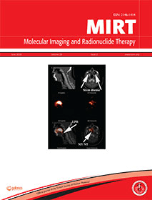
Molecular Imaging and Radionuclide Therapy
Scope & Guideline
Exploring the intersection of radiology and therapeutic innovation.
Introduction
Aims and Scopes
- Molecular Imaging Techniques:
Focuses on the development and application of advanced imaging modalities, such as PET, SPECT, and CT, to visualize biological processes at the molecular and cellular levels. - Radionuclide Therapy:
Explores the therapeutic applications of radionuclides in treating various cancers, including the mechanisms of action, efficacy, and safety profiles of different radiopharmaceuticals. - Diagnosis and Treatment Monitoring:
Aims to improve diagnostic accuracy and treatment outcomes through imaging techniques that allow for the evaluation of treatment responses and the identification of disease recurrence. - Clinical Applications in Oncology:
Highlights the role of molecular imaging in oncology, particularly in the detection, characterization, and staging of tumors, as well as in personalized treatment approaches. - Interdisciplinary Research:
Encourages collaboration between researchers, clinicians, and industry to foster innovations in imaging and therapy, combining insights from nuclear medicine, radiology, and pathology.
Trending and Emerging
- Novel Radiopharmaceuticals:
A growing body of research is focusing on the development and clinical application of novel radiopharmaceuticals, particularly those targeting specific molecular markers in cancers. - Theranostics:
The integration of therapeutic and diagnostic approaches, known as theranostics, is increasingly prevalent, allowing for personalized treatment strategies based on imaging findings. - Artificial Intelligence in Imaging:
The application of artificial intelligence and machine learning techniques for image analysis and interpretation is emerging as a significant trend, enhancing diagnostic accuracy and workflow efficiency. - Immuno-PET Imaging:
Research on immuno-PET, which combines immunotherapy with PET imaging to monitor treatment response, is gaining traction as a promising area for personalized cancer management. - Radiomics and Texture Analysis:
The use of radiomics to extract quantitative features from imaging data for predicting treatment outcomes and tumor characteristics is increasingly popular, reflecting the trend towards data-driven approaches in oncology.
Declining or Waning
- Non-Oncological Applications:
Research focusing on non-oncological applications of molecular imaging and radionuclide therapy has decreased, as the field has increasingly concentrated on oncology-related studies. - Older Imaging Techniques:
There is a noticeable decline in publications centered around older imaging techniques that have been largely supplanted by more advanced methodologies, such as PET/CT and hybrid imaging. - Basic Science Studies:
The journal has shifted towards more clinically oriented research, resulting in fewer publications that focus solely on the basic science aspects of imaging and therapy. - Traditional Radiopharmaceuticals:
Research on traditional radiopharmaceuticals that do not incorporate newer imaging technologies or innovative therapeutic approaches is becoming less frequent.
Similar Journals

Iranian Journal of Radiology
Connecting Researchers for a Brighter Imaging FutureWelcome to the Iranian Journal of Radiology, a pivotal platform dedicated to advancing the field of radiology, nuclear medicine, and medical imaging. Published by BRIEFLAND, this journal aims to disseminate high-quality original research, reviews, and clinical studies that contribute substantially to the global scientific community. Established in 2008 and spanning until 2024, the journal provides an essential archive of knowledge in a rapidly evolving discipline. Although it currently holds a Q4 quartile ranking in the 2023 Scopus metrics, it serves as an important resource for both emerging and established researchers looking to submit their work. Located in the Netherlands, the journal is committed to open dialogue and collaboration amongst professionals in the field, reflecting its accessibility and relevance to both practitioners and academics. With its continued growth and commitment to quality, the Iranian Journal of Radiology is poised to enhance understanding and innovation in diagnostic imaging.
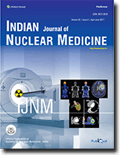
Indian Journal of Nuclear Medicine
Bridging Radiology and Nuclear MedicineIndian Journal of Nuclear Medicine, published by Wolters Kluwer Medknow Publications, serves as a crucial platform for advancing knowledge and research in the field of nuclear medicine, a specialized domain crucial for diagnostic imaging and therapy. With an ISSN of 0972-3919 and an E-ISSN of 0974-0244, this esteemed journal has been a trusted source of information from 2010 to 2024. Situated in Mumbai, India, it caters to researchers and professionals with an interest in the interplay between radiology and innovative nuclear imaging techniques. Although classified as Q4 in Radiology, Nuclear Medicine, and Imaging in 2023, the journal actively contributes to the dialogue surrounding emerging technologies, clinical practices, and challenges in nuclear medicine, making it a significant addition to the academic discourse. While currently not categorized as Open Access, readers can benefit from the wealth of peer-reviewed articles that shape the future of nuclear medicine and its applications. As the impact factor and specific H-index details are not listed, the journal's potential for future growth and increased visibility in the academic community remains promising, positioning it as a commendable resource for students, researchers, and healthcare professionals dedicated to the advancement of medical imaging and therapy.
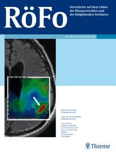
ROFO-FORTSCHRITTE AUF DEM GEBIET DER RONTGENSTRAHLEN UND DER BILDGEBENDEN VERFAHREN
Empowering Knowledge in Radiological AdvancementsROFO-Fortschritte auf dem Gebiet der Röntgenstrahlen und der bildgebenden Verfahren, published by Georg Thieme Verlag KG, is a pivotal journal in the fields of radiology and nuclear medicine, offering invaluable insights for researchers, healthcare professionals, and students alike. With an ISSN of 1438-9029, this journal has been a stalwart of scientific communication since its inception in 1975, actively contributing to advancements in imaging techniques and radiation therapy. Although it operates under traditional access, the journal maintains a respectable standing, reflected by its Q3 ranking in Radiology, Nuclear Medicine and Imaging and Q4 in Medicine (miscellaneous), highlighting its significance in the scholarly community. Its coverage spans a wide array of topics pertinent to diagnostic imaging and therapy protocols, making it an essential resource for anyone seeking to understand the complexities of modern radiological practices. As the journal continues to evolve through 2024, it invites contributions that enrich the dialogue around technological innovations and clinical applications in the realm of imaging modalities.

NUCLEAR MEDICINE REVIEW
Unveiling Breakthroughs in Imaging TechniquesNUCLEAR MEDICINE REVIEW is a distinguished journal in the field of radiology, nuclear medicine, and imaging, published by VIA MEDICA in Poland. Since its transition to an open access format in 1999, this journal has been dedicated to promoting the dissemination of knowledge and research findings across a global audience. With a focus on innovative approaches and advancements in nuclear medicine, it aims to serve as a key resource for researchers, professionals, and students who are working to further the understanding of nuclear imaging and its applications. In 2023, the journal was classified in the Q3 category within Radiology, Nuclear Medicine and Imaging, and Q4 in the broader category of Medicine (miscellaneous), highlighting its growing reputation in the academic community. As of the latest assessments, the journal has been ranked #235 out of 333 in its field according to Scopus metrics, reflecting its commitment to excellence and the relevance of its published works. The NUCLEAR MEDICINE REVIEW is a pivotal platform for those engaged in cutting-edge research, providing insights that drive the evolution of medical imaging and therapeutic techniques.

Journal of the Belgian Society of Radiology
Fostering Collaborative Research in RadiologyThe Journal of the Belgian Society of Radiology, published by UBIQUITY PRESS LTD, is a pivotal resource in the field of radiology, nuclear medicine, and imaging. With an ISSN of 2514-8281 and E-ISSN of 2514-8281, this open access journal has been dedicated to fostering the dissemination of high-quality research since its establishment in 2010. Distributed from the United Kingdom, it offers a platform for innovative studies, case reports, and reviews that contribute to the advancement of radiological sciences. Despite its current Q4 category ranking within Scopus, the journal plays a critical role in sharing essential findings with a community of over 1,200 professionals and students eager to stay abreast of emerging trends and technological advancements in imaging. By enabling unrestricted access to its publications, the journal encourages collaborative research and knowledge exchange that transcends geographic boundaries, solidifying its importance for both established researchers and emerging scholars in the discipline.

European Journal of Hybrid Imaging
Pioneering Innovations in Imaging TechnologiesEuropean Journal of Hybrid Imaging, published by SpringerNature, stands as a pivotal platform for scholarly discourse in the rapidly evolving fields of hybrid imaging technologies and methodologies. Since its inception in 2017, this open access journal has significantly contributed to the interdisciplinary interface of biophysics, computer science, molecular medicine, and radiology. With its current standing in the Q2 and Q3 quartiles across various categories, it provides valuable insights and research outputs pertinent to both academic and clinical practitioners. The journal's rigorous peer-review process ensures the highest standards of scholarly integrity, while its open access format promotes global accessibility and encourages collaborative research efforts. Covering a diverse range of topics pertinent to hybrid imaging, the journal serves as an essential resource for researchers, professionals, and students alike, fostering innovation and knowledge exchange within the scientific community.
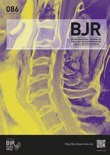
BRITISH JOURNAL OF RADIOLOGY
Advancing Radiology Through Innovation and ExcellenceBritish Journal of Radiology is a leading peer-reviewed journal published by the British Institute of Radiology, dedicated to advancing the field of radiology, nuclear medicine, and imaging. With a prestigious history dating back to 1945, this journal is at the forefront of disseminating cutting-edge research and innovations that significantly impact clinical practice. Currently enjoying a Q1 ranking in the field of radiology and Q2 in general medicine for 2023, it is recognized for its rigorous standards and high-quality content, ranking #87 out of 333 in Scopus for specialties related to Medicine, Radiology, Nuclear Medicine, and Imaging, placing it in the 74th percentile. Researchers, professionals, and students are encouraged to engage with the latest findings and comprehensive reviews presented within its pages, which contribute not only to academic discourse but also to the evolution of practice in the wider medical community.
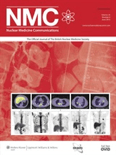
NUCLEAR MEDICINE COMMUNICATIONS
Illuminating Innovations in Diagnostics and TherapyNUCLEAR MEDICINE COMMUNICATIONS is a prestigious academic journal published by Lippincott Williams & Wilkins, focusing on the multifaceted field of nuclear medicine and its applications in diagnostics and therapy. With a solid history spanning from 1980 to 2024, this journal provides a platform for peer-reviewed research articles, clinical studies, and innovative techniques that enrich the knowledge base within the fields of {{medicinal applications, patient care, and imaging technology}}. Currently classified in the Q3 quartile for both Medicine (Miscellaneous) and Radiology, Nuclear Medicine, and Imaging, the journal reflects its commitment to advancing healthcare practices. Although it does not offer open access options, its accessibility through reputable institutions promotes scholarly exchange among researchers, professionals, and students alike. The critical insights provided in NUCLEAR MEDICINE COMMUNICATIONS are essential for those dedicated to enhancing patient outcomes through cutting-edge nuclear medical technologies.
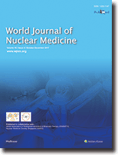
World Journal of Nuclear Medicine
Unlocking the Potential of Nuclear Medicine for AllWorld Journal of Nuclear Medicine, published by THIEME MEDICAL PUBL INC, is a premier peer-reviewed journal dedicated to advancing the field of nuclear medicine. With an Open Access model established since 2011, this journal ensures that high-quality research is accessible to a wide audience, fostering knowledge sharing and collaboration among researchers, clinicians, and students alike. The journal aims to publish innovative studies, reviews, and clinical trials that contribute significantly to both the theoretical and practical aspects of nuclear medicine, enhancing diagnostic and therapeutic techniques within this critical area of healthcare. As the journal continues to grow in visibility and impact, it remains an essential resource for those seeking to stay at the forefront of advancements in nuclear medicine.
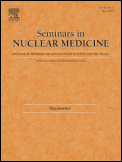
SEMINARS IN NUCLEAR MEDICINE
Transforming nuclear medicine through high-quality discourse.Welcome to Seminars in Nuclear Medicine, a prestigious journal published by W B Saunders Co-Elsevier Inc that has been at the forefront of the field since its inception in 1971. This journal serves as a dedicated forum for researchers, healthcare professionals, and students specializing in the rapidly evolving areas of radiology and nuclear medicine. With an impressive ranking of #29 out of 333 in the Scopus category, drawing an esteemed 91st percentile, it holds a distinguished Q1 category status, highlighting its critical role in disseminating high-quality research and clinical practices. Although it does not operate as an Open Access publication, Seminars in Nuclear Medicine remains a vital resource, featuring comprehensive reviews and insightful articles that inform the medical community about the latest advancements and applications within nuclear imaging. This journal not only enhances knowledge but also encourages collaboration among professionals dedicated to improving patient outcomes through innovative nuclear medicine techniques.